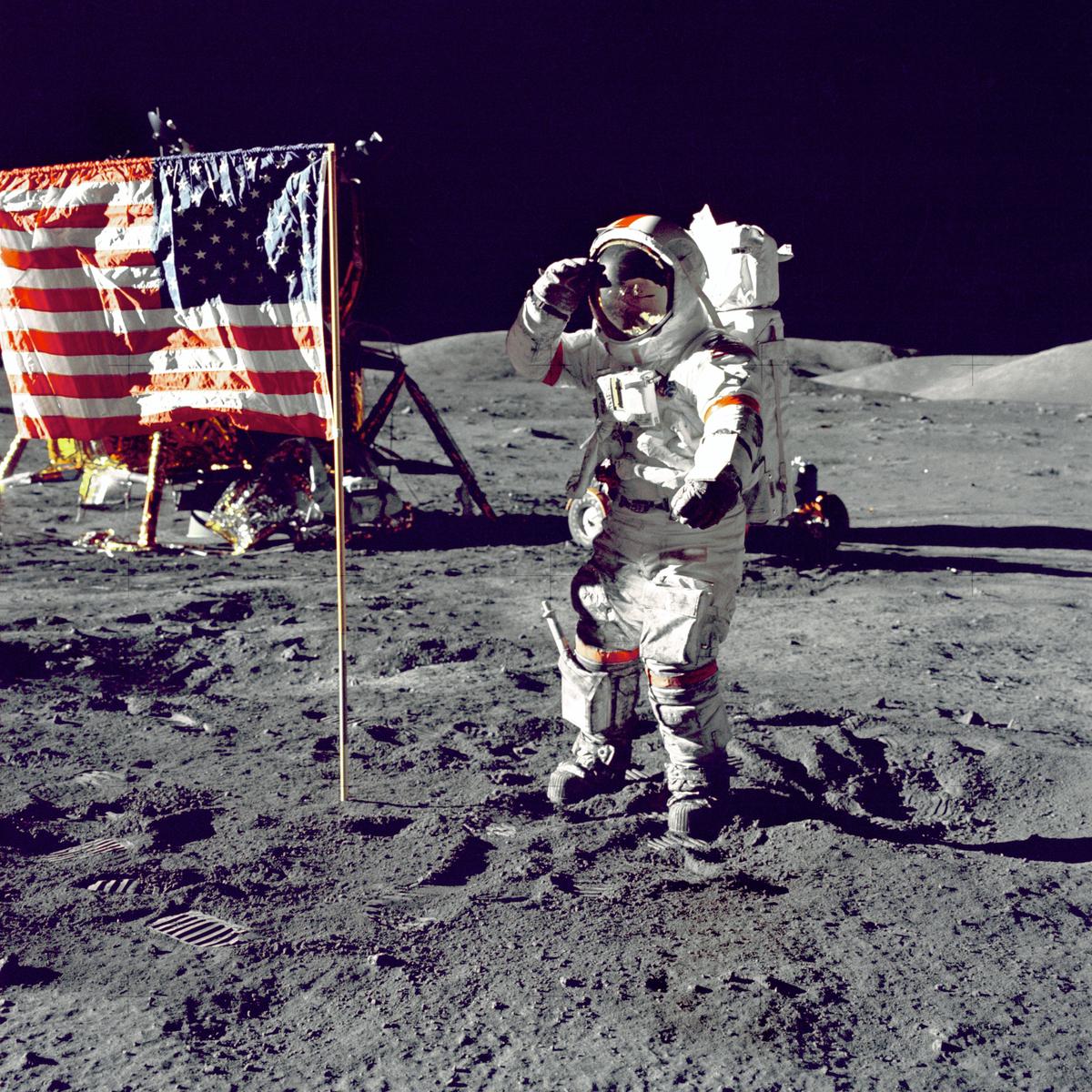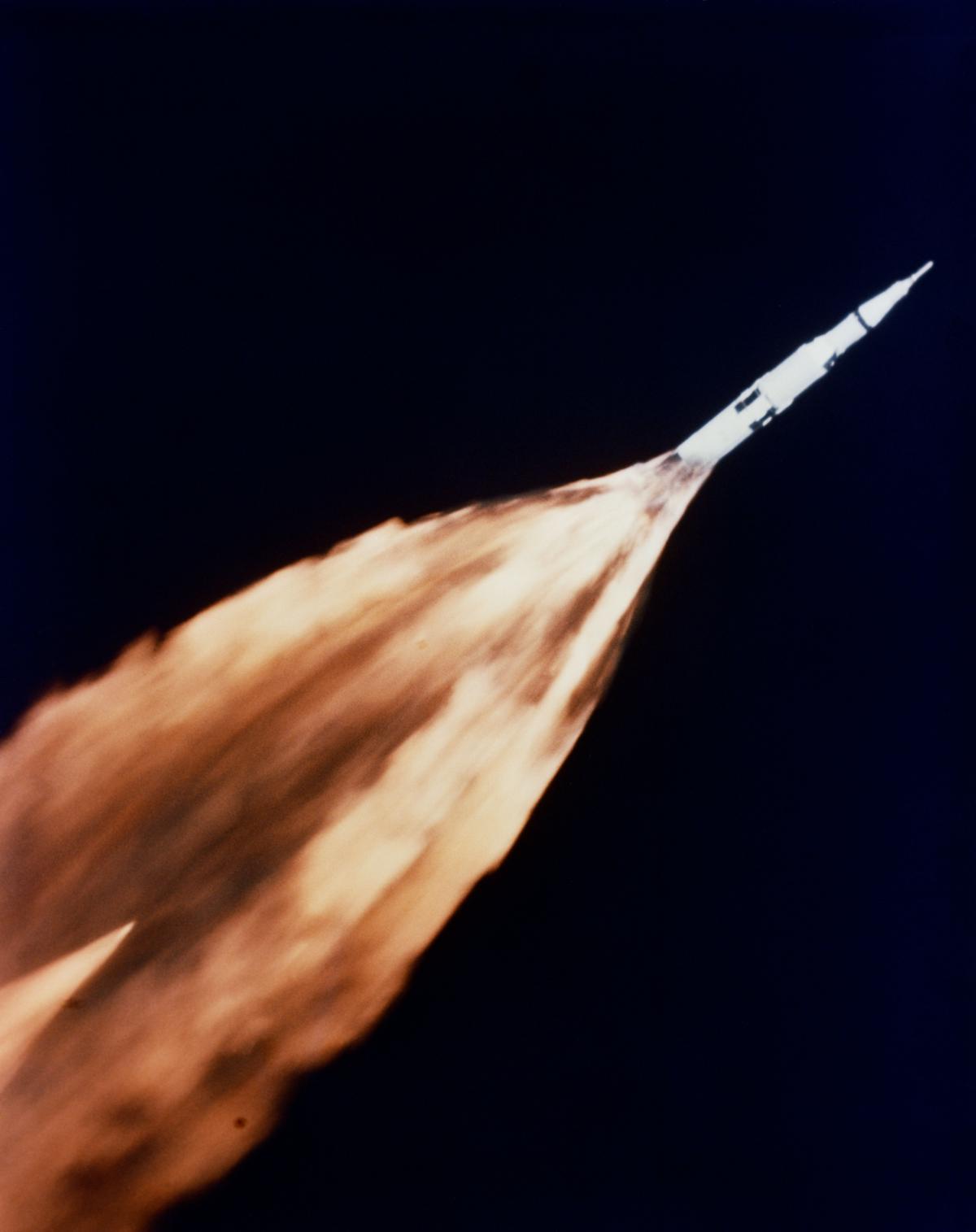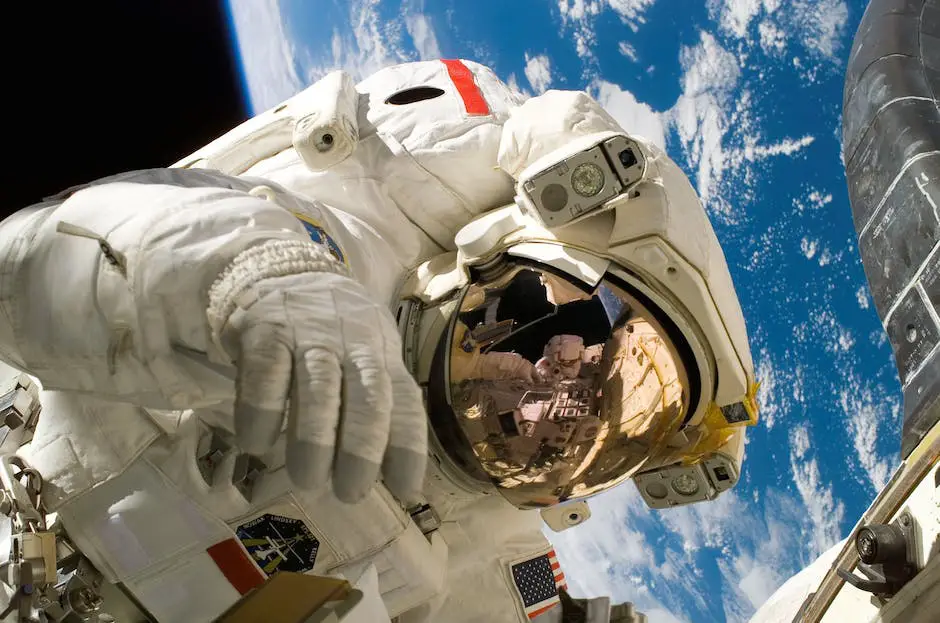The Apollo missions, an ambitious space program led by NASA from 1961 to 1972, marked a hallmark era in humanity’s pursuit of space exploration. Their adventurous journey, which boasted the first human footprint on the moon, set the foundation for today’s ongoing exploration conducted by many different nations and private entities.
Navigating the complexities of outer space presents compelling challenges, both then and now. However, it also showcases the incredible technological strides taken since Apollo’s era, offering a profound contrast to modern-day space expeditions such as those driven by SpaceX and NASA’s Mars rovers.
In examining these two epochs, we cultivate an enriched understanding of the monumental achievements, technological evolution, the hurdles encountered – and their remarkable solutions, and the deep impact this extraordinary journey has had on scientific advancement and humankind.
Contents
- 1 Overview of Apollo Missions
- 2 Exploring Modern Space Expeditions
- 3 Technological Advances
- 4 Challenges and Risks
- 5 Impact on Science and Humanity
- 5.1 The Milestone Journey: Recounting the Apollo Missions
- 5.2 The Modern iteration: Space Expeditions of Today
- 5.3 Apollo Or Mars: A Shift in Perspective
- 5.4 A single comparison of both eras elucidates how strikingly space exploration has shaped, and continues to influence, our understanding of the Universe and our place within it
Overview of Apollo Missions
Back to the Moon: The Apollo Legacy
Between 1961 and 1972, NASA’s Apollo programs reshaped our understanding of the universe and humankind’s place within it. With the scratchy crackle of “That’s one small step for man, one giant leap for mankind,” echoing over radio waves in July 1969, the world held its breath as we first set foot on the lunar surface.
These Apollo missions were characterized by grit, determination, and a hive mind of ingenuity. Twelve astronomers etched their names into history books and the moon’s gray dust, undoubtedly marking the pinnacle of human exploration. The Apollo missions challenged the conceivable boundaries of technology and bravely confronted the mysteries of space, inspiring generations to come.
The Apollo missions, mired in both triumphs and failures, proved to be an epic saga of human audacity. The Apollo 1 disaster claimed the lives of three astronauts, but instead of fostering hesitance, it galvanized NASA’s resolve to safely land astronauts on the moon and bring them back to earth; a feat accomplished with Apollo 11.
Modern Space Expeditions: A New Generation
In contrast to the Apollo era’s government-led initiatives, we are now experiencing a resurgence of interest in space exploration headlined by private companies like SpaceX, Blue Origin, and Virgin Galactic, with a renewed focus on reaching Mars.
These modern space expeditions are built upon the legacy of the Apollo missions but enhanced by technological advances. Where the Apollo missions had room-sized computers with lesser processing power than a modern calculator, today’s space expeditions leverage the power of supercomputers, AI, and robotics.
The goals of today’s expeditions are not just lunar; they are interplanetary. These missions are characterized by a mandate to build a sustainable human space-faring civilization. There is a clear shift towards long-term missions such as Mars colonization (Mars is home to SpaceX’s Starship), and development of lunar bases as stepping-stones to deeper space exploration.
One of the most notable shifts is the move from competition, as seen in the Apollo-era space race against the USSR, to collaboration. International and commercial partnerships are now the norm, with efforts such as the Artemis Accords promoting peaceful exploration and collaboration.
Modern space expeditions often include non-astronaut passengers, a concept novel and somewhat controversial. Private companies like Virgin Galactic and Blue Origin are responsible for this trend, providing space tourists a brief, albeit expensive, experience of microgravity.
A Comparative Study: Apollo Missions and Modern Space Expeditions
The Apollo missions marked an monumental era in history, when space was labeled as the untraversed frontier and every new revelation had the potential to reshape our cosmic knowledge.
These pioneering missions, driven by the intensity of the Cold War, profound national pride and an urgent need to assert technological dominance, bore countless risks and challenges. Yet, they ultimately emerged victorious, shifting human perception of achievable milestones.
In comparison, present day space expeditions amplify these goals and resources exponentially. Exploratory aspirations now include possibilities of space tourism, exploiting cosmic resources, and actualizing a multi-planet civilization.
With private entities and international alliances joining the fray, the landscape has vastly diversified. Yet, despite this evolution, each expedition stands firmly on the foundation laid by the Apollo missions, consistently pushing back the limits of human knowledge and capability.
In this journey of humanity venturing into space, both past and present, a few themes resonate throughout – the unyielding spirit of exploration, the courage to confront the unknown, and the innate curiosity to unravel the secrets beyond our terrestrial confines.
As we stand at the threshold of a future where space travel is no longer limited to a privileged few, it becomes ever crucial to acknowledge our journey from its roots, when the pioneers of space dared to harbor dreams bigger than themselves.

Exploring Modern Space Expeditions
Tracing Back to the Apollo Era
The Apollo program, the brainchild of NASA, remains one of the most notable milestones in human space exploration. This era was characterized by giant strides of mankind, including 12 astronauts, from Apollo 11 through Apollo 17, venturing onto the lunar surface from 1969 until 1972.
These missions, in all their magnitude, served as a potent reminder of the extraordinary feats human collaboration, determination, and intellect were capable of achieving. In those time, we were merely scratching the surface of spacecrafts technology and devising our training protocols – none of it came with a blueprint.
Every mission was a journey into a catalogue of unknown variables. But even in the face of staggering adversity, the triumph of the Apollo program is a testament to mankind’s indomitable spirit.
Modern Space Expeditions
Fast forward to the 21st Century and space exploration has gained new vigor, benefiting from decades of technological and scientific advancements. Private companies like SpaceX, founded by Elon Musk, and Blue Origin, backed by Jeff Bezos, have joined the foray alongside national and international space organizations. NASA remains a pioneer, but it now shares the stage with these new players.
SpaceX has redefined the industry with its game-changing reusable rocket technology. This groundbreaking innovation lowers the cost of space travel by reutilizing the costly rockets, previously abandoned after single use in earlier space programs like Apollo. The Dragon crew capsule, another brainchild of SpaceX, has already ferried astronauts to and from the International Space Station (ISS), another milestone not imagined during the Apollo era.
NASA is also keen on reigniting lunar exploration, hinted at by its Artemis program. Yet, its sight spans further. With its rover missions, including Spirit, Opportunity, and more recently, Perseverance, NASA has set its sight on Mars. Alongside conducting important research, these rovers verify the feasibility of a future manned mission to the red planet – a leap beyond the Apollo missions’ Moon landings.
International collaborations like the ISS, joint lunar plans, or Mars expeditions have highlighted another evolution since Apollo times. Today, space exploration now holds a more cooperative approach than the competitive streak experienced during the Cold War era.
Technology & Training Advancements
Beyond the aspects of operational achievements and mission objectives, modern space travel has undergone a technological and training revolution compared to the Apollo times. Today’s spacecrafts are equipped with modern computational systems and automated controls, a stark difference from the Apollo-era’s rudimentary navigation and control systems.
Additionally, advanced materials are used in spacecraft, space suits, and other equipment that offer enhanced safety and function compared to the Apollo era’s counterparts.
Training programs for astronauts have evolved significantly as well. While Apollo astronauts trained for eventualities they could face on the Moon, today’s astronauts are trained for long-duration space habitation, space walks, and the possibility of unexpected events during a mission in outer space. Amidst this, the physical and mental resilience of astronauts continues to be paramount, just as in the Apollo times.
From Apollo to Today
Reflecting on the journey from the Apollo missions to contemporary space explorations unveils a timeline of human advancement. It demonstrates our progress from achieving the first moon landing to the potential of manned Mars missions or even the concept of interstellar travel.
Despite this significant evolution, the elemental spirit of exploration, curiosity, and daring that guided Neil Armstrong on the lunar surface continues to inspire today’s astronauts. They reach for the stars, undeterred by the vast unknown stretching before them.

Technological Advances
The Era of Bold Ventures
The Apollo missions marked a period of daring undertakings in human exploration history. An unbelievable number of 400,000 individuals contributed to the ground-breaking achievement of landing on the moon.
The colossal Saturn V rocket was the preferred spacecraft for these missions. Standing as tall as a thirty-six-story building, its launch represented the cutting-edge of technology at that time, tearing through Earth’s atmosphere on a trajectory to the moon.
The Apollo spacecraft, although seemingly small, were tailored specifically for the three astronauts on board. They were densely filled with instruments and controls, a far cry from the streamlined interiors of modern spacecraft.
The spacesuits worn by the Apollo astronauts were noticeably bulky, with a focus on functionality rather than aesthetics, almost giving the wearers a robotic appearance.
Radio waves were the vital connection back to Earth, transmitting voices and invaluable data across the cosmic void. The navigation systems were rudimentary, relying more on the skill and judgment of the astronauts than on technology.
An Epoch of Sophistication
In contrast, the modern era of space exploration is marked by leaps in technological sophistication. From NASA’s Artemis program to SpaceX’s Starship expeditions and beyond, a new wave of technological marvels are paving the way for man’s venture into the cosmos.
Today’s launch vehicles, like the Falcon Heavy and the upcoming Space Launch System, are marvels of engineering. They’ve replaced the monolithic, single-use rockets of yesteryears with reusable, more sustainable models that undercut the cost of space travel.
Modern spacecraft, be they the Crew Dragon or Orion, they resonate with sophistication. Slick interiors, touch screen controls, and a clever utilization of space reflect a commitment to comfort, safety, and efficiency.
Space suits have evolved significantly as well. Like second skins, they balance protection and mobility with unsurpassed precision. Elon Musk’s SpaceX suits with their sleek, minimalist design underscore this advancement.
Communication systems have seen massive improvements as well. Laser communication technologies are in the works, offering speedier and more reliable connections than radio waves. Navigational equipment, aided by the proliferation of satellites and advancements in computing, provides pinpoint accuracy in the face of the vast unknown.
The realm of space exploration, from the daring advent in the era of Apollo missions to the evolved exploits of today, stands as a testament to human innovation and determination. As our technological capabilities continue to evolve, so does our capacity to explore and comprehend the celestial frontier, edging us closer to our ambition of becoming a multiplanetary species.

Challenges and Risks
Risk and Endeavour: The Era of Apollo Missions
The Apollo missions of NASA during the 1960s and 70s signified a time of unparalleled space exploration, bravely taking the first humans to the moon. Even in the face of enormous risk and challenge, these bold expeditions continued unchecked. Although modern space adventures are still fraught with potential danger, the advancements in technology, knowledge, and well-crafted preparations have led to a reduction in adversity.
During the Apollo era, the true extent of risk was largely unknown, owing to the limited information available about space. The fear of radiation exposure in space, micrometeoroid impacts, and the potential mental health impact of extended space travel were unfamiliar territories. Technologically, the Apollo missions had to operate within the confines of the then limited computational power. To put it into perspective, the Apollo Guidance Computer boasted less processing power compared to contemporary smartphones.
Apart from dealing with the unseen dangers, astronauts of the Apollo missions also had to endure the physical extremities. Factors such as exposure to high g-forces during liftoff and reentry, the continuous threat of cabin decompression, and maintaining physical and mental well-being in remote space were challenging. Moreover, spending long durations in confined spaces was still a novel concept, making it a significant area of concern.
The Rise of Modern Space Exploration
Over the past several decades, there have been significant advancements in our experience and understanding of space travel. This knowledge allows for a more comprehensive and effective preparation to mitigate the risks involved in modern space expeditions.
Compared to the Apollo era, the level of technological development we have achieved in spacecraft is astonishing. With superior computer systems and radiation shielding, contemporary spacecraft like the International Space Station (ISS) boast considerably better protection against threats such as micrometeoroids and radiation. Also, evolved life-support systems offer increased safety for astronauts during extended missions.
Moreover, our appreciation of the psychological challenges related to prolonged confinement in outer space has grown considerably. Despite improvements, psychological risks persist, especially in anticipation of long-haul missions to Mars and further afield.
Total astronaut safety has also been advanced considerably, with greater reliability in space launch system engines, and the addition of launch abort systems in modern spacecraft to protect crew in case of emergencies.
However, it should not be ignored that with each technological leap made, risks simply evolve rather than disappear. High-tech systems are prone to failures, and the more complex a system, the more potential there is for malfunction.
The emerging interest of the private sector in space travel, including companies like SpaceX and Blue Origin, introduces a new set of risk factors. With an aggressive approach toward risk acceptance, private space ventures create a fresh dynamic in risk management.
In conclusion, while both Apollo era and modern space expeditions have had their unique sets of challenges and risks, they have also underscored the resourcefulness of humanity. With our continued exploration of the cosmos, we can encounter and surmount new challenges and risks.

Impact on Science and Humanity
The Milestone Journey: Recounting the Apollo Missions
As we transitioned further into the twentieth century, the world began its profound journey into the cosmic wilderness. A pivotal force in this voyage was NASA’s Apollo program, which held the audacious aim of performing that which was unthinkable: landing a human on the moon.
The Apollo missions, epitomized by the celebrated Apollo 11, dared to venture into unexplored domains not only of space but also of scientific knowledge. The fruits of these historical missions were monumental, providing substantial insights about lunar geology and evolution, and fostering breakthroughs in engineering and technology.
Yet, the most transformative impact of the Apollo expeditions was not confined to the scientific realm. It also dramatically altered our perspective of our home planet. The memorable Earthrise photograph, taken by the crew of Apollo 8, gave us a vision of Earth–fragile, singular, and beautiful–floating against the vast cosmic backdrop. This poignant image resonated with people globally, inculcating an enhanced sense of stewardship toward our environment and fostering a deeper bond among us as fellow voyagers aboard the spaceship we call Earth.
The Modern iteration: Space Expeditions of Today
Fast forward to the 21st century, the era of Mars rovers, reusable rockets, and the prospect of manned Mars missions. Modern space expeditions, led by organizations like SpaceX, the European Space Agency, and an evolved NASA, are boldly exploring our solar system and beyond. The focus has shifted from one-off exploratory missions to goals of sustainable space travel and the potential establishment of human colonies on other planets.
Scientifically, these missions are delving into realms previously beyond our reach. Discoveries in recent years, such as the existence of underground water on Mars, or the discovery of intriguing organic molecules by the Mars Rover, Curiosity have constituted significant insights into astrobiology and the possibility of extraterrestrial life.
Simultaneously, advanced technologies developed for the sake of these expeditions extend into many aspects of our daily lives—from solar energy to improved weather forecasting and even firefighting equipment.
Apollo Or Mars: A Shift in Perspective
The evolution in the motives and methods of space missions, from Apollo to the present, reflect societal changes. The Apollo missions, catalyzed by the cold war and a race to assert dominance, were essentially an embodiment of competition. Today’s space expeditions, on the other hand, emphasize cooperation between countries and companies and prioritize establishing a sustained, long-term human presence in space.
While the Apollo missions marked the initial departure of humans from Earth, today’s expeditions contemplate a more permanent exodus, propelled by concerns around the survivability of our planet. This shift in perspective has fostered a new sense of collective responsibility toward space exploration.
A single comparison of both eras elucidates how strikingly space exploration has shaped, and continues to influence, our understanding of the Universe and our place within it
The Apollo missions imprinted the first footprints on the lunar surface, altering humanity’s perspective on our potential as a species. Contemporary space endeavors continue to push these boundaries, instilling a vision of a future where humans might not merely be visitors in space, but inhabitants.
Yet, despite the differences, an underlying similarity persists: a shared curiosity, a collective yearning to unlock the secrets of our universe. In this ceaseless quest for knowledge, both the Apollo missions and today’s space expeditions underscore the very essence of what it means to be human.
Unquestionably, the Apollo missions and modern-day space explorations coalesce as extraordinary chapters in the annals of outer space exploration. They provide us with a fascinating story of human ingenuity, courage, and determination – a testament to our ceaseless yearning to venture into the unknown.
The technological evolution since the Apollo era, the persistence in the face of adversity, and the celebrations of success – all combine to shape the spirit and future direction of space science. Furthermore, they influence our understanding of the universe and broaden our perspective of humanity’s role within it.
The brave journey that started with setting foot on the lunar surface continues to inspire current and future adventurers, scientists, and dreamers, marking our collective stride towards the infinite expanse of the cosmos.

With a passion for unraveling the mysteries of the moon, Dr. Luna Sterling is a highly-respected astrophysicist, a dedicated lunar enthusiast, and a captivating blogger. After earning her Ph.D. in Astrophysics from the Massachusetts Institute of Technology (MIT), she served as a lead scientist and mission planner for NASA, contributing significantly to various lunar missions.
For over two decades, Luna has been at the forefront of lunar science, pushing boundaries and pioneering discoveries that have enriched our understanding of the moon’s geological history. However, it’s her infectious enthusiasm for all things lunar that truly sets her apart.
In an endeavor to bring the moon closer to everyone, Luna started her blog, “Luna’s Lens: A Closer Look at the Moon.” With this platform, she offers a unique blend of intriguing moon facts, updates on lunar missions, and personal anecdotes from her experiences in the field, all told in an engaging and accessible manner.
Luna’s unique blend of scientific expertise and warm, humorous writing style has transformed complex astrophysics into compelling narratives that captivate her audience. As a gifted communicator, she leverages her knowledge and experience to relate scientific facts to everyday life, thus making her blog a must-read for both seasoned space enthusiasts and curious newcomers.
Interactive and inviting, Luna frequently encourages reader engagement through thought-provoking discussions and a monthly ‘Ask Dr. Luna’ feature, where she personally answers questions about the moon and space exploration. A celestial storyteller at heart, Dr. Luna Sterling’s passion for the moon is as vast as the cosmos she explores, making her an invaluable beacon in the world of lunar science.